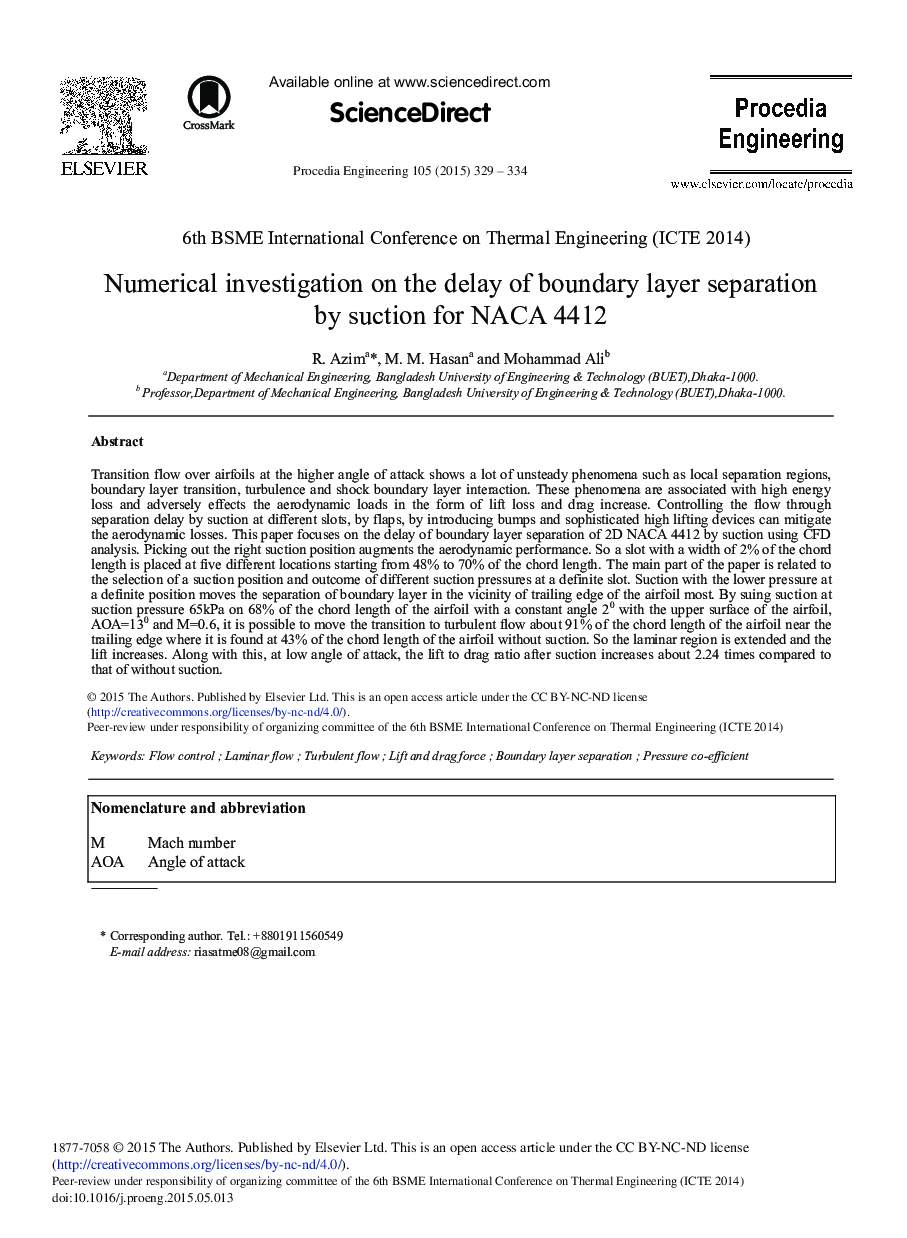| Article ID | Journal | Published Year | Pages | File Type |
|---|---|---|---|---|
| 856471 | Procedia Engineering | 2015 | 6 Pages |
Transition flow over airfoils at the higher angle of attack shows a lot of unsteady phenomena such as local separation regions, boundary layer transition, turbulence and shock boundary layer interaction. These phenomena are associated with high energy loss and adversely effects the aerodynamic loads in the form of lift loss and drag increase. Controlling the flow through separation delay by suction at different slots, by flaps, by introducing bumps and sophisticated high lifting devices can mitigate the aerodynamic losses. This paper focuses on the delay of boundary layer separation of 2D NACA 4412 by suction using CFD analysis. Picking out the right suction position augments the aerodynamic performance. So a slot with a width of 2% of the chord length is placed at five different locations starting from 48% to 70% of the chord length. The main part of the paper is related to the selection of a suction position and outcome of different suction pressures at a definite slot. Suction with the lower pressure at a definite position moves the separation of boundary layer in the vicinity of trailing edge of the airfoil most. By suing suctionat suction pressure 65 kPa on 68% of the chord length of the airfoil with a constant angle 20 with the upper surface of the airfoil, AOA = 130and M = 0.6, it is possible to move the transition to turbulent flow about 91% of the chord length of the airfoil near the trailing edge where it is found at 43% of the chord length of the airfoil without suction. So the laminar region is extended and the lift increases. Along with this, at low angle of attack, the lift to drag ratio after suction increases about 2.24 times compared to that of without suction.
